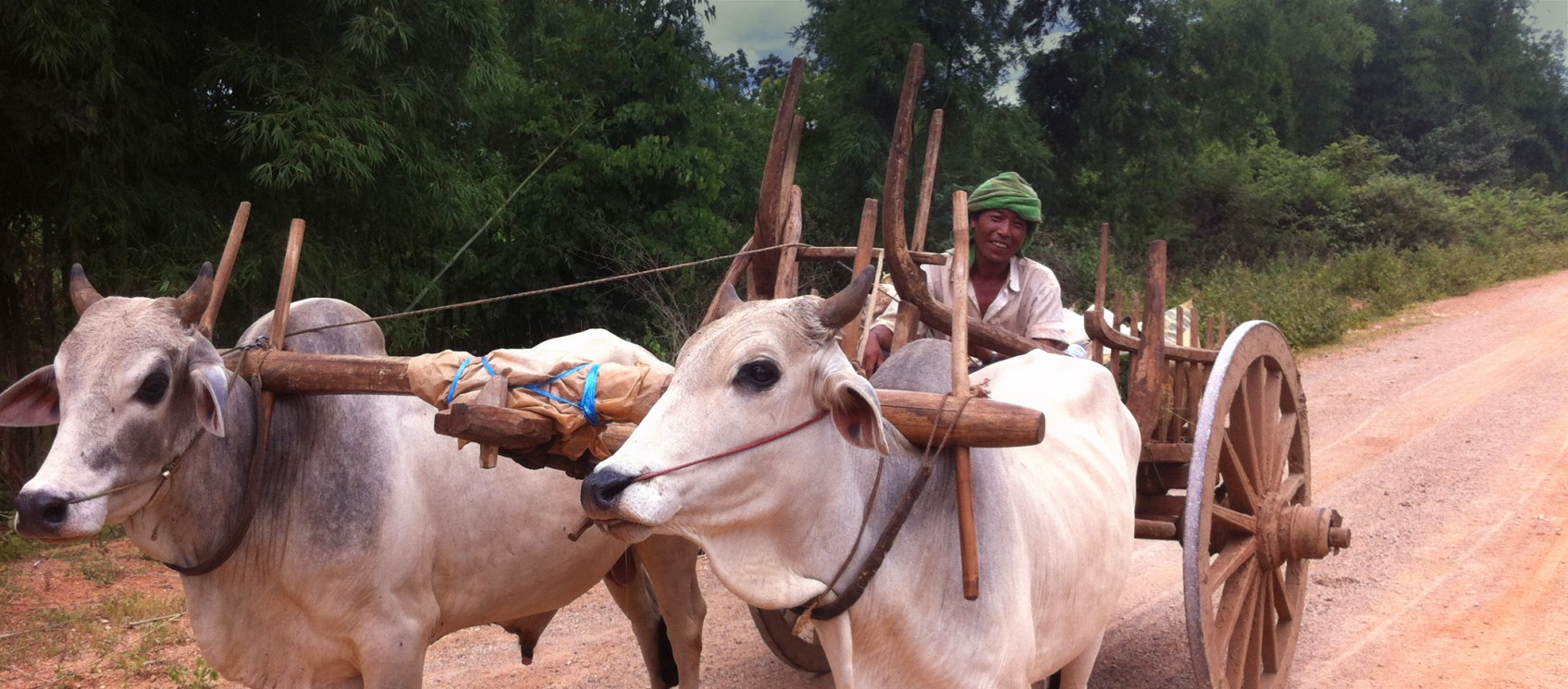Myanmar Semester, Sample Itinerary
The following is a sample itinerary based on past courses; actual itineraries may vary.
| Week 1 | Our journey begins in Yangon, Myanmar’s largest and most cosmopolitan city. We take time to explore the rich cultures, cuisines and urban landscapes of this urban center, and to delve into the political, economic and social transitions presently occurring in Myanmar. Soon after, we board a bus to the ancient city of Bagan, our gateway for exploring the golden land of Myanmar. In Bagan we take our packs off for a few days and explore the wonders of the old city, retreating from the heat in the afternoons to quiet temple corners and riversides for introductions into Myanmar’s history, culture and language. This will also be a time for us to come together as a group and formulate our intentions and expectations for the coming weeks of travel, learning and exploration. |
|---|---|
| Weeks 2 & 3 | From Bagan we embark further into the Myanmar Dry Zone region, an area colored with the deep Buddhist traditions of the Bamar culture. We spend a few days exploring the pilgrimage site of Mount Popa and learning about Theravada Buddhist traditions, before moving on to the meandering paths and toddy palm groves of Atar village, where individual homestays provide us an up close introduction to rural life in Myanmar’s dry zone. Through sharing chores, meals and stories with our host families we will begin to find pace with the rhythm of life in Myanmar and understand how the people of this region continue to live in balance with their unique natural surroundings in an era of political and ecological change. |
| Week 4 | From Atar we continue northeast toward Mandalay, the medieval capital of Myanmar, and the second largest city. While in Mandalay we live at Phaung Daw Oo, Myanmar’s largest monastic school, where we partner with local high school students in a cultural exchange that allows us to get to know the real Mandalay. Here we delve into discussing politics, social change, and youth empowerment in one of Myanmar’s most cultured cities. Mandalay is also a place where we’ll settle into more regular language classes and research independent study projects with local mentors. |
| Weeks 5 & 6 | From Mandalay we head for the pine and bamboo forests of Shan State. A trek through hill tribe villages brings us to Sin Leh, a beautiful village community accessible only by old market roads and muddy footpaths. Warmly welcomed by our Danu ethnic home stay families, we settle into village life. We work the fields, learn to cook, tend to the buffalo and practice our Myanmar language skills during pick-up games of soccer and chin lone down by the local school. Through morning discussions and conversations with elders and community leaders we familiarize ourselves with the unique history of Myanmar’s eastern borders and explore important questions related to ethnicity, identity, and land. |
| Weeks 7 | At the end of our stay in Sin Leh we trek for two days to the edge of idyllic Inle Lake where we board long-tail boats to Nyaungshwe, a lakeside village and one of Myanmar’s fastest growing tourist destinations. We will explore the fine craftsmanship of the artisans who are based along the lake and learn about some of the ecological challenges this unique and vulnerable bioregion is currently facing. |
| Week 8 & 9 | Upon departing the Shan Hills, we’ll make our way west toward the Chin Hills on the Bangladesh border. Known as one of the Myanmar’s most mysterious regions, the Chin Hills are separated by the dry, savannah like low country by 10,000 foot Victoria Peak and divergent from the rest of the country in a litany of spiritual, cultural and linguistic senses. Almost entirely Christian coverts from 18th and 19th century missions, the Chin inhabit a remote, mountainous region lacking in many development metrics. Here students have an opportunity to trek from village to village — sleeping in community centers and churches along the way — while prioritizing interactions with a host of representatives from various ethnic and social groups whose livelihood is tied to their cultural preservation as well as the steep, unforgiving terrain. Environmental conservation, rural development, public health, spiritual integrity and political agency are central topics during this phase. |
| Weeks 10 & 11 | Once we return to the lowlands, students apply skills developed over the first two and half months by working together to design their own student-led expedition. Options include exploring the limestone mountains of Karen State, examining the dramatic history of modern Myanmar in Naypyidaw, attending a Buddhist meditation retreat, or traveling south to the Bay of Bengal and Myanmar’s meandering coastline. |
| Week 12 | Our trip winds up with the transference phase of the program, where we map out ways to take our experience back home with us. How will we share this adventure with our loved ones? How will we apply all of this newly acquired wisdom to our lives back home? Our traveling family makes its way back to Yangon, to pack up and prepare for the flights home. |

